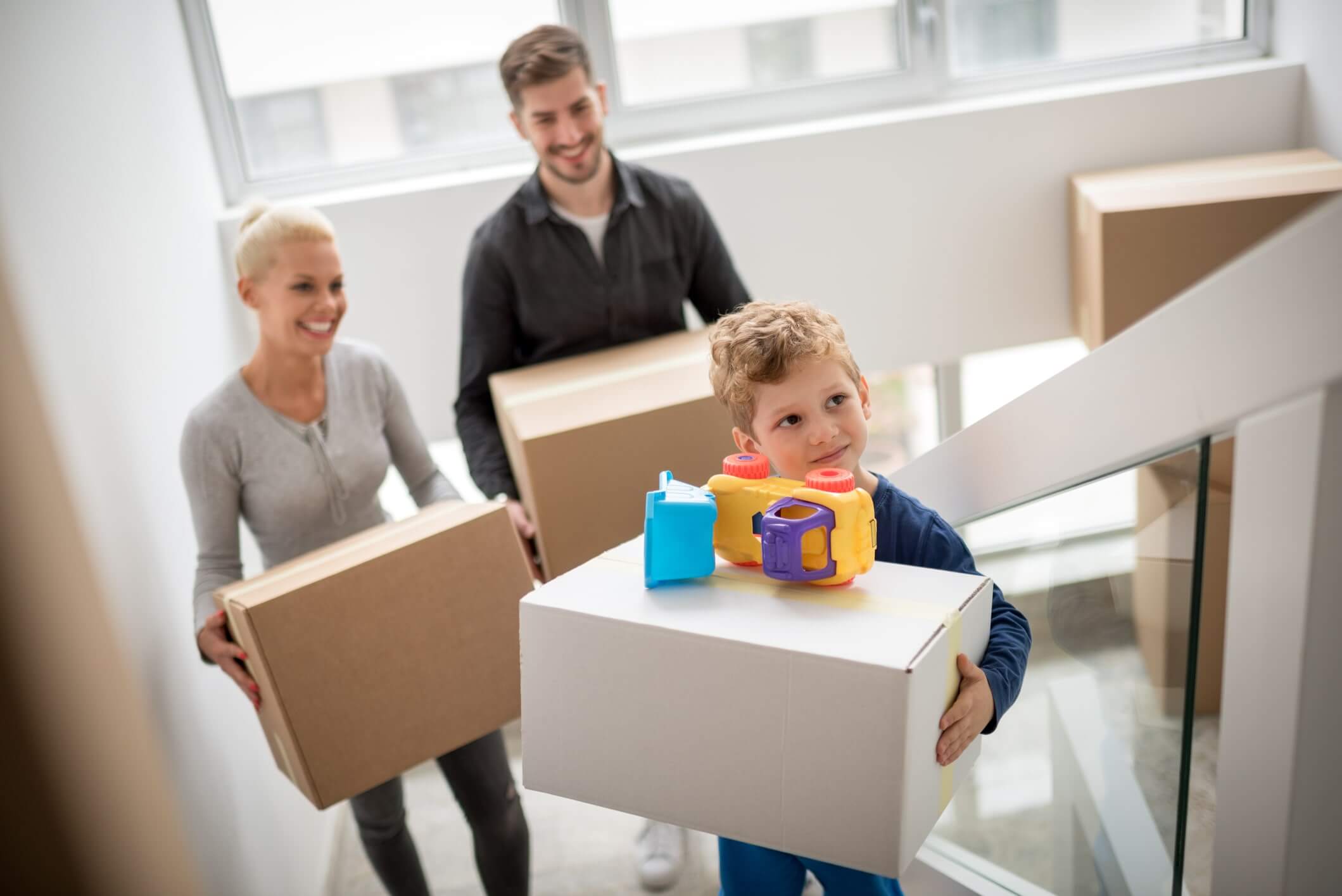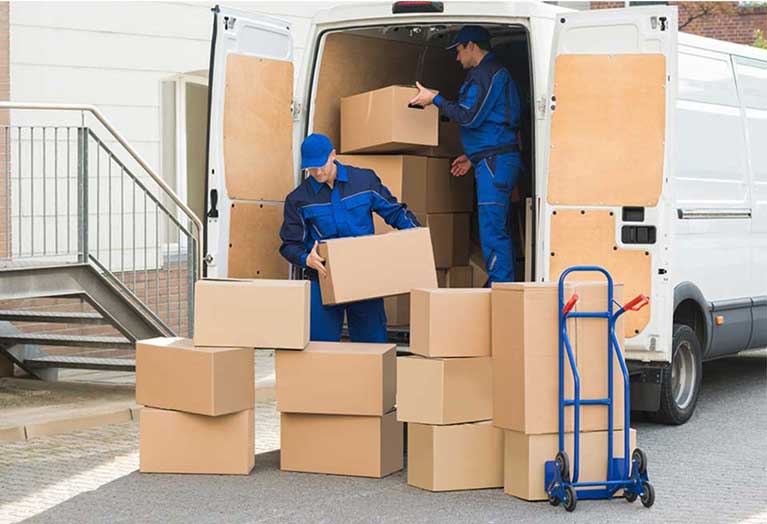How Do You Know If You Should Downsize Before Relocation?
There are many factors to consider when deciding whether or not to downsize your home before relocating. Here are a few key points to keep in mind:
The cost of living in your new location
If the cost of living in your new city or town is significantly higher than where you currently live, downsizing your home may be an excellent way to offset some of the increased expenses. This will benefit every family member, especially if you long for a simpler life.
The size of your new home
If you’re downsizing from a four-bedroom house to a one-bedroom apartment, you’ll need to get rid of some belongings as you go through your home-buying journey. But even if you’re moving from a three-bedroom house to a two-bedroom condo, you may still want to consider downsizing to save on space (and storage fees).
Your current financial situation
If you’re struggling to make ends meet, downsizing your home can help you in saving money and alleviate the emotional toll of financial hardships.
The emotional impact of downsizing
This is a very personal consideration, but it’s crucial to think about how you’ll feel emotionally when home downsizing. For some people, moving into a smaller house can be liberating and empowering; for others, it can be difficult and stressful.

The impact on your family
Downsizing may mean sending kids to a different school district if you have kids, and it could also mean saying goodbye to beloved pets that can’t come with you to your new house. When people downsize, the entire process takes time. It may mean more than simply leaving a big house and planning ahead with all members of the family. For empty nesters, it may mean more money, a new lifestyle, and feeling overwhelmed less often.
The amount of time and effort required to downsize
If you have a lot of belongings, Downsizing can be a very time-consuming and labour-intensive process. Make sure you have the time and energy to devote before making any decisions.
Considering downsizing your home before relocating, weigh all of these factors carefully to make the best decision for your unique situation.
With any change, there will be challenges, but if you go into Downsizing with a plan and some expert advice, it will make the process much less stressful.
Check out these tips on downsizing your home before a big move without losing your mind!

Get going right away, but don't rush the downsizing process
Starting the downsizing process quickly will allow you to sort your belongings without feeling rushed. You should get started at least three months before your actual move date, but the sooner, the better. This will give you time to go through everything and make decisions without feeling like you’re on a tight timeline. However, try to do only some things in one day or weekend. Breaking the process up into manageable chunks will make it feel less daunting and allow you to take your time making decisions.

Here are some commonly-used downsizing tips:
- The One-a-Day Approach: Pick one room or area to focus on daily. Go through everything and decide what to keep, donate, or trash from the other rooms.
- The One-a-Week Approach: Dedicate one day each week to Downsizing. This will allow you to go through everything and make thoughtful decisions.
- Closet Hanger Trick: This is a great way to declutter your closet. Hang all of your clothes with the hangers facing backward. After you wear an item, put it back in the closet with the hanger facing the right way. After six months, anything that is still hanging backward can be donated or sold.
- KonMari: This approach, made famous by Marie Kondo’s book The Life-Changing Magic of Tidying Up, involves going through your belongings and only keeping things that “spark joy.” This can be a great way to streamline your belongings before a move. For most people, this process is liberating and allows them to enjoy life more.
- Four-Box Method: This approach involves sorting your belongings into four boxes: keep, donate, sell, and trash. This can help you quickly make decisions about what to do with everything.

Make three piles: Keep, Donate, and Trash
As you go through your belongings, it’s helpful to make three piles: things you want to keep, things you want to donate, and things you want to trash. This will help you stay organized and make decisions more quickly. Once you have your three piles, you can start deciding what to do with them. Let go of one item per day or the number of things that correspond with the date (i.e. giving away 12 items on the 12th of a given month).
Sort through your belongings room by room
Start in one room and work your way through the entire house. This will help you stay focused and avoid getting overwhelmed. You can start with one area of a room, like your closet, and work your way around until the entire room is done. As you go through each room, make sure to ask yourself these questions:
- Do I use this regularly?
- Do I love this?
- Is this in good condition?
- Do I have room for this in my new place?
Answering these questions will help you decide quickly what to keep and what to let go of.

Pay Attention to One Space at a Time
It can be overwhelming to think about cleaning and arranging your entire home. Plan ahead so you’ll finish the whole thing by dividing it into smaller, more doable tasks. The best way to keep on track without being overwhelmed is to develop a plan or timetable that breaks things down room by room or project by project inside a room. Here are some examples of things that could be broken down into individual steps:
- Cleaning out the fridge
- Wiping down all the kitchen cabinets
- Cleaning the oven
- Dusting all surfaces in the living room, yes every bit of square footage
- Vacuuming under the furniture in the bedrooms
- Organizing the linen closet
- Organize kitchen drawers

Donate or Sell Items You No Longer Need Or Use
Once you’ve gone through your belongings and decided what to keep and let go of, it’s time to get rid of the things you don’t want. You can donate an item to a local charity or thrift store if it is in good condition. If it’s not in good condition, you can throw it away or recycle it. If you have valuable items you no longer need or want, you can sell them online or at a garage sale.
If you’re not sure where to donate or sell your items when moving into a smaller space, here are some ideas:
- Donate to Goodwill, The Salvation Army, or another local thrift store.
- Sell on Craigslist, Facebook Marketplace, or a garage sale.
- Recycle at a local recycling centre.
- Throw away in the trash.
- Keep in storage spaces

Keep Your Daily Routine in Mind
Keeping your daily routine in mind as you go through your belongings is essential. If you like to have everything in its place, you’ll want to ensure that your new home is organized in a way that makes sense. On the other hand, if you’re not as concerned with being super organized, you can be more relaxed about how you arrange your things. The most important thing is that you’re comfortable in your new home and that everything is easily accessible.

To Save Money, Make a List of Essential Things You Need to Buy
As you’re downsizing, you may realize that there are some things you need to buy for your new place. For example, if you’re moving from a house to an apartment, you may need to buy smaller furniture or storage containers. You may need to buy new clothes if you’re moving from a cold to a warm climate. Make a list of the things you need to accept to be prepared for your move. Some things you may need to buy include:
- Furniture
- Storage containers
- Clothes
- Shoes
- Linens
- Dishes
- Cookware
- Small appliances

Create A Digital File System And Keep It Up To Date As You Go
Nowadays, creating a digital file system for all your essential documents is easier than ever. This can be anything from tax documents and birth certificates to school transcripts and medical records. Creating a digital file system will help you keep track of everything in one place and make it easy to find what you need when you need it. Plus, it will save you a lot of space in your new home!
Don’t Forget About Your Pets; They Are Family Members Too!
If you have pets, remember to make arrangements for them. If you’re moving to a smaller place, you may need to find a new home for your pet or get rid of some of their things. If you’re moving to a different climate, you’ll need to ensure that your pet has the right food, water, and shelter. And if you’re moving to a place with a strict pet policy, you may need to find a new home for your furry friend.

Hire A Professional Moving Company
Hiring a professional moving company can make your downsizing experience a lot easier. They can help you pack your things, transport them to your new home, and even unpack. This can be a great option if you’re short on time or have many moving boxes to move. Just be sure to do your research and choose a reputable company.

Create A Maintenance Plan For Your New Home
A maintenance plan is essential now that you’re all moved into your new, smaller home. This will help you keep your place clean and organized and prevent unwanted pests or problems. Here are some things to include in your maintenance plan:
-
-
-
Cleaning Schedule
-
-
Create a cleaning schedule that works for you and stick to it. Whether you’re cleaning once a week or daily, ensuring your place is clean will help you feel more comfortable and relaxed in your new home.
-
-
-
Pest Control
-
-
If you live in an area with pests, you must do what you can to prevent them from entering your home. This may include keeping your food in sealed containers, using pest traps, and regularly cleaning your home.

-
-
-
Home Maintenance
-
-
Be sure to keep up with the maintenance of your new home. This includes changing the air filters, checking the smoke detectors, and fixing any leaks or problems as soon as they arise.
-
-
-
Organization Plan
-
-
If you want to keep your new home organized, it’s crucial to have a plan. This may include using storage containers, labelling everything, and having a place for everything.
-
-
-
Backup Plan
-
-
No matter how well you plan, there may be times when things go differently than planned. That’s why it’s important to have a backup plan. This may include having a spare key hidden somewhere, knowing the contact information for your landlord or maintenance company, and having a list of emergency numbers on hand.
Following these tips, you can make downsizing a breeze before a big move! Just remember to take your time, plan, and don’t be afraid to ask for help when needed.

Our Removalist Services
Removalists Sydney
Removalists Melbourne
Removalists Melbourne to Sydney
Removalists Sydney to Melbourne
Removalists Melbourne to Adelaide
Removalists Adelaide to Melbourne
Removalists Melbourne to Canberra
Removalists Canberra to Melbourne
Removalists Melbourne to Brisbane
Removalists Brisbane to Melbourne
Related Moving Tips
Pre-Move Checklist for Landlords
Top Tips When Keeping Items in Long-Term Storage
Best Reasons to Book Professional Packing Services
Avoid These Common Moving Mistakes at All Costs
Tips for Safely Packing and Transporting Lamps and Light Fixtures During a Move
Simplify Your Move with These Essential Moving Tips
Safely Pack Electronics and Gadgets With These Easy Tips
Proven Tips to Protect Your Floors and Walls During a Move
All You Need to Know About Moving Insurance
How to Find the Best Moving Companies in Australia
Best Advice When Moving Long Distances
Tips to Make Moving House Easier for Women
The Ultimate Guide for Moving Pianos
Labelling Hacks for Efficient Packing
Expert Advice on Painting and Decorating When Moving House
Can You Really Save Money With Backloading Services?
Top Tips When Disassembling Furniture for Relocation
Preparing for Long Distance Moves: Where Do You Start?
Practical Tips for Moving During the Hot Summer Months



